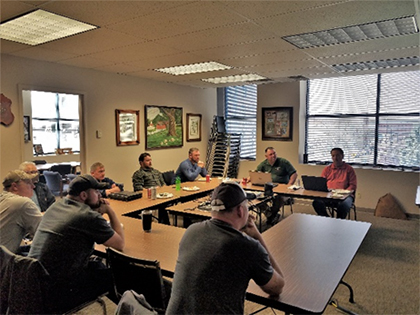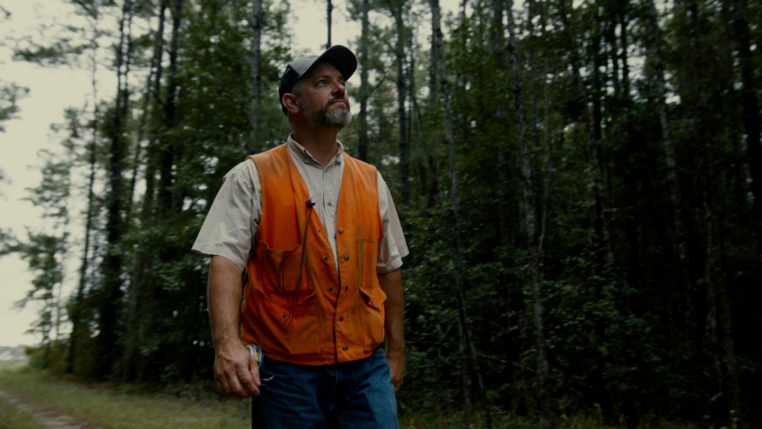Another Page, Another Chapter and Another Great Story!

We all understand or are aware of just how dangerous logging is as a profession. It is no job for the faint of heart. It is more than just a risky profession; it is the most dangerous occupation in the United States! In the mid to late 1980s, Ohio saw a 43% increase in accidents within their wood products industry, and everyone was asking the question, “what could be done and how to do it?” At about that same time, one man, Mike Long, the Marketing and Utilization Coordinator for the Ohio Department of Natural Resources Division of Forestry, asked the question, “What if…?” What if we could help loggers reduce injuries and work more safely by forming local logger chapters. The logger chapters would be made up of loggers and representatives associated with the profession, and they were “grassroots” organizations committed to change (or you could say “tree roots” organizations which is a well-grounded ol’ guys joke, I know!). These chapters were formed to develop programs and projects that could promote the specific and general welfare of loggers through information, education, and legislative action. These actions were all done within the scope and under the auspices of the Ohio Forestry Association and in conjunction with the Logging Standards Council.
The earliest chapters hosted a Loggers Celebration Day to bring loggers and their community together. The general public met with loggers who shared what they did and why. The public then developed an understanding that loggers were stewards of the environment, protecting it while promoting sustainable forestry. The famous logging activist, Bruce Vincent, attended that first field day and challenged loggers by saying, “the world is run by those who show up!” Those words were prophetic and inspirational because the chapters and the membership have been “showing up” and growing ever since.
I spoke with charter members of those earliest chapters and asked what they thought about the original organized chapters. One logger said, “back in those days, loggers saw other loggers as ‘the enemy’ and never talked about problems or worked on solutions.” After chapters were formed, the loggers began working together, gaining some trust, and advancing a common cause. Their love of the outdoors and hard work ethics are the essence of who loggers are.
However, another less obvious character trait developed within the chapters: LEADERSHIP! Individuals were elected to serve in their local chapters. They gained respect from their peers and have provided a voice of reason and unity for the chapters. Many have even testified in front of the Ohio General Assembly on issues such as the state budget and controversial issues such as logging at the Mohican State Forest. They have also taken an outward stance on Wayne National Forest management issues and worked to draft legislation on logging practices. If an issue concerns forestry or landowner rights, you can count on the chapters to be proactive on the issue.

Chapters all function autonomously, collecting dues and dispersing the funds to support causes. Collectively, they have sponsored hundreds of logger training classes, hosted annual forestry field days, raised over a million dollars through Log A Load, sponsored students to forestry camps, provided CPR and first aid training, scheduled Chainsaw Safety Training (CSAW) Program classes, collected money for families who have experienced a loss or significant financial crisis, etc. Ohio’s “Logger of the Year” nominations have come from logger chapters. State winners have gone on to compete for FRA’s Regional Logger of the Year, and in one “magical” moment, Redoutey Logging was awarded FRA’s National Logger of the Year.
Chapter officers work with their local Soil and Water Conservation District (SWCD) and Division of Forestry professionals to investigate complaints pertaining to logging jobs. Chapters working in conjunction with government agencies have made it possible to work through issues and remedy difficult situations. No doubt, this collaborative effort has helped prevent more significant legislative action. Best Management Practices (BMP) are voluntary, but chapter members have had considerable input into the original Best Management Practices Handbook. They provided commentary and feedback as the “Best Practices” were established. The latest revision of that BMP handbook will “hit the woods” sometime later this year.There are nine active logger chapters in Ohio and 148 Master Logging Companies with 202 trained loggers. It all started with one man asking the question, “What if…?” Our industry is full of dreamers, and our dreamers are doers. We have great minds and the talent to get things done. Just like the formation of the logger chapters, everything starts with a dream or a vision and asking the question, “What if…?” My question is… are you a dreamer or a doer?


